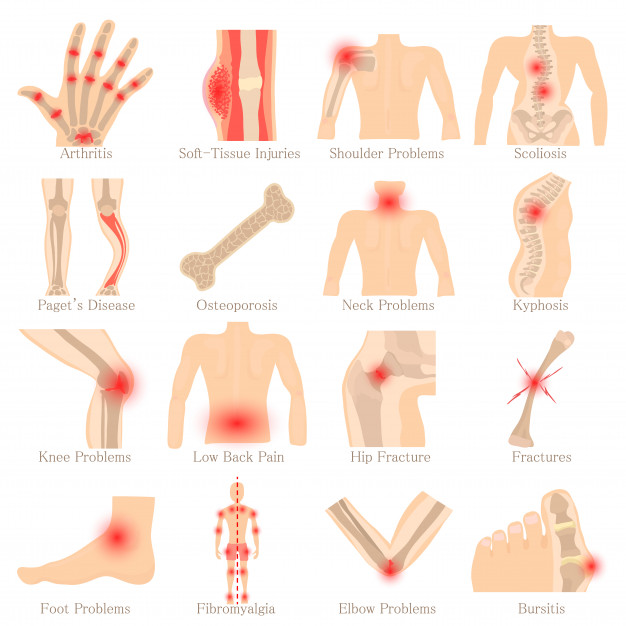What is chronic pain?
Pain is your body’s normal reaction to an injury, infection, or illness in the body. With proper treatment when the condition starts healing, the pain usually disappears. But for some, the pain may continue for 3 to 6 months. This debilitating long term pain is called chronic pain and may end up in a condition called syndrome or CPS. According to statistics, 1 out of 5 people suffer from chronic pain. Battling chronic pain is physically and mentally exhausting and takes a psychological toll on the sufferer causing symptoms of anxiety, depression, insomnia, and suicidal thoughts in extreme cases.
Many people cannot function normally and their lifestyle changes from normal to one with dependency. Everyday activities can become difficult and many times treatments are hard to find. A combination of medication, physiotherapy, counseling, and relaxation techniques can help to manage and relieve pain to an extent. Alternative therapies like acupuncture, dry needling, muscle/ trigger release may also give additional relief to some.

While we are aware of chronic pain conditions like migraine, back pain, neck pain, arthritis, there are many pain conditions that exist but are not very well known. Also because many of these pain conditions are a feeling and cannot be physically seen, some sufferers may look normal from the outside as their condition is invisible. Being aware of these conditions helps us be sensitive and empathetic with the people suffering from them and helps us understand them better.
Fibromyalgia
A neuromusculoskeletal pain condition, fibromyalgia is a problem with central pain processing in the brain, where there may be an increased sensitivity or perception of pain. fibromyalgia is difficult to manage as each patient experiences a different set of symptoms. As there are no tests for the condition, it leads to delayed or missed diagnosis. It is usually confirmed by eliminating other pain conditions and autoimmune disorders. Symptoms include widespread body pain, irregular sleep patterns, tingling and numbness in the hands and feet, restless leg syndrome (RLS), heightened sensitivity to touch, cold or heat, “fibro-fog” or poor memory, tenderness in trigger points, fatigue, and stiff joints and muscles.
Endometriosis
Endometriosis occurs when the tissue similar to the lining of the uterus grows in other places in the body outside of the womb. Unbearable abdominal pain, heavy periods, and infertility are some of the symptoms. Treatment options include pain relievers, hormones, and surgery. In endometriosis, the pain may be so intense that they are called killer cramps. It worsens with age. It causes pelvic and belly pain, back and leg pain, migraines, bowel issues, and painful sex.
Lupus
A long-term autoimmune disease where the body’s immune system becomes hyperactive and attacks normal, healthy tissue, Lupus is called “disease of 1,000 faces”. Joint and muscle pain or myalgia is often the first sign of lupus. Other symptoms include inflammation, swelling, and damage to the joints, skin, kidneys, blood, heart, and lungs.
Multiple Sclerosis (MS)
Multiple sclerosis is a disease where the immune system eats away at the protective covering of nerves resulting in nerve damage. Multiple sclerosis may cause vision loss, pain, fatigue, and impaired coordination. The symptoms may not be felt by Some people while others can have severe, chronic symptoms that never go away. The pain caused by MS is musculoskeletal, paroxysmal, or chronic neurogenic. Pain syndromes include headache, continuous burning pain in the extremities, back pain, painful tonic spasms (cramping, pulling pain).
Ankolysing Spondilitis
Ankylosing spondylitis is an inflammatory disease where some of the small bones in your spine (vertebrae) to fuse, making the spine less flexible. This results in a hunched back for some and makes the back, rib cage, and neck stiff and painful along with painful chest, hips, shoulders, and feet. It is at times accompanied by inflammation in the bowel and eyes. There is no cure for ankylosing spondylitis,
Complex Regional Pain Syndrome (CRPS)
CRPS is a rare chronic neurological condition and is a.k.a. suicide disease (due to the level of pain). It is a form of chronic pain that usually affects an arm or a leg which develops after an injury, a surgery, a stroke, or a heart attack and can spread from its source to elsewhere in your body, such as the opposite limb. Pain, swelling, redness, noticeable changes in temperature, and hypersensitivity are the initial symptoms.
Irritable Bowel Syndrome (IBS)
Result of an overly sensitive colon or immune system which causes extreme belly pains or cramps in the lower half of the belly, which get worse after meals and feel better after a bowel movement. This can be because of slowed or spastic movements of the colon, causing painful cramping, abnormal serotonin levels in the colon, affecting motility and bowel movements, a mild celiac disease that damages the intestines, can cause IBS symptoms. Other symptoms include bloating and gas, constipation, or diarrhea.
Osteoarthritis
When the cartilage between the ends of bones in joints gradually deteriorates and wears down completely, it results in osteoarthritis. The bone can rub on bone and hence it is also known as a “wear and tear” disease. osteoarthritis affects the entire joint and causes changes in the bone. It deteriorates the connective tissues that hold the joint together and attach muscle to bone. Since it causes inflammation of the joint lining, Osteoarthritis is a degenerative disease that worsens over time, resulting in chronic pain.
Rheumatoid Arthritis
Rheumatoid arthritis is a chronic inflammatory autoimmune disorder that can affect not just your joints but can damage other body systems like the skin, eyes, lungs, heart, and blood vessels. It occurs when your immune system attacks your own body’s tissues. Rheumatoid arthritis causes a painful swelling on the lining of the joints and eventually results in bone erosion and joint deformity. The resulting inflammation can damage other parts of the body as well.
Tell us your experience if you are suffering from a debilitating chronic pain condition.



















